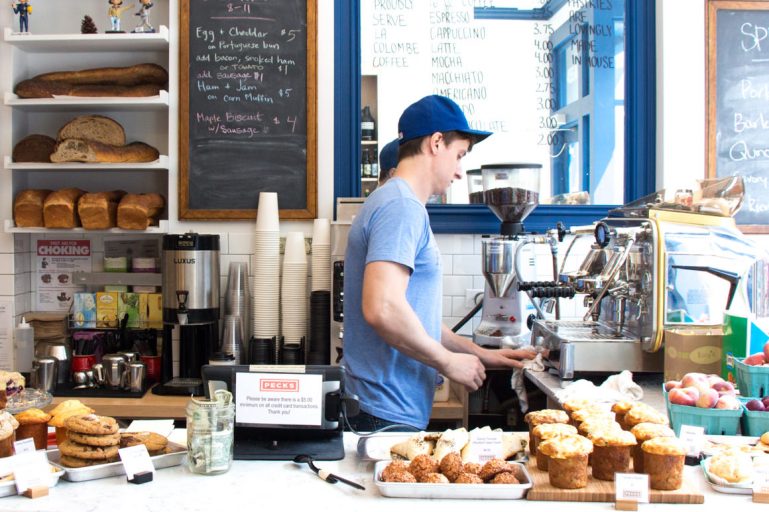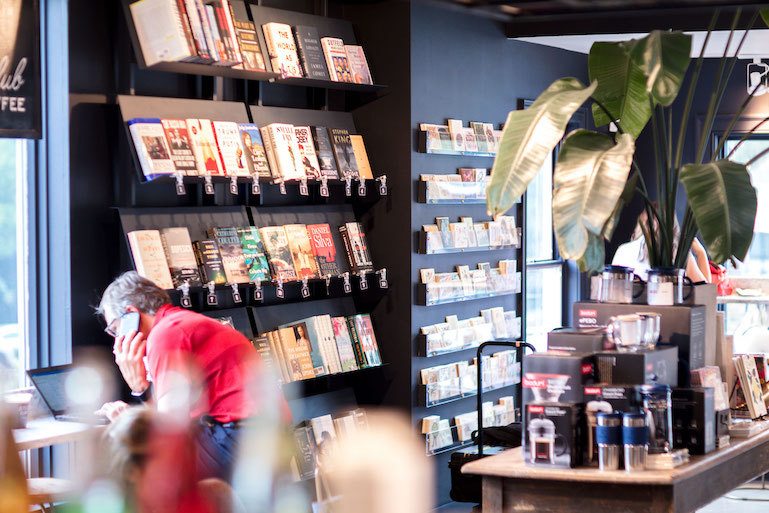
5 Proven Tips for the Perfect Coffee Shop Design
You’ve mastered the art of brewing an exceptional cup of coffee and you’re confident that your coconut cream pie is the pinnacle of perfection, but choosing the ideal coffee shop design and layout, especially if you have a small space, may be out of your comfort zone.
Coffee shop design is crucial for drawing in customers and enticing them to return, making it absolutely important to get right. After all, the goal is to grow a loyal customer base that turns to you for their morning coffee before any other store. The following five elements are essential ingredients for designing the perfect coffee shop business. Whether you have a small space that you need to utilize strategically, or you have ample room, this guide will help you maximize creating a coffee shop that turns into a thriving local community hub.
A Clear Concept That Appeals to Your Target Audience
If you’re unsure about what makes your coffee shop business unique or why it might appeal to your target audience, you’re not quite ready to begin choosing the design for your coffee shop. Will it be old-fashioned? Modern? Tongue-in-cheek retro? Sophisticated? Fancy? Relaxing? Child-friendly? Healthy? French? Your coffee shop’s design concept will largely depend on your target audience. After all, a crowd of retirees will have different tastes and expectations than a group of young professionals.
Determine your coffee shop’s target audience and design concept now and make sure that you are 100 percent clear on it to ensure consistency across the other key aspects of your business.
Coffee Shop Design for Small Spaces
Some people will choose your coffee shop because it looks cozy, some will choose it because they think that a smaller coffee shop equals smaller queues and better service. Some customers may even choose it because they’ll equate the small size and minimal seating with peace, and use it as a chance to get some work done.
Although you might be working with a tiny space, that doesn’t mean that you’ll get to skimp on the cost of what customers will consider luxury. These days, free wifi is a must, and if you’re hoping that your target audience will consist of people who are stopping in to catch up on a few hours work with a delicious coffee before they head home, then you’ll need to make sure that you have an abundance of power outlets. Remember, the longer their battery lasts, the longer they’re likely to stay in your coffee shop.
SEE ALSO: Top 10 Things to Get Right When Opening a Coffee Shop
Outdoor Signage and Storefront Design
Enticing customers can be difficult for the new kid on the block. Choosing a name, exterior design, and signage that reflects not just your coffee shop, but your staff and products as well, can be a challenging task, but it’s key to establishing a strong brand identity.
What will the exterior of your coffee shop look like? Will you have outdoor seating? Or will it be conceived in a way that discourages patrons from hanging out in your establishment? You also want to consider any design restrictions imposed on your coffee shop by the community or venue location. Your coffee shop’s design should instantly convey the concept you have in mind. For example, if your coffee shop is intended to be modern and sophisticated, shabby chic shutters and geraniums on the windowsills might not be the best choice.
Anyone who has ever owned a brick-and-mortar business will tell you that good signage not only helps you tell a good brand story, it’s key to overcoming the hurdle of getting customers inside your store. Again, your signage should reflect your coffee shop’s design concept. For example, reclaimed wood is an excellent choice for an old-fashioned coffee shop sign.
The same is true of the font used on the sign. Make sure that your sign is easy to read and distinctive. Signage is part of the overall coffee shop’s design and should look right at home in the storefront. At the same time, it needs to stand out so that people passing by can quickly identify what your business is and has to offer.
Coffee Shop Equipment
Running a smaller coffee shop? Although it might seem a little counterintuitive, the first thing you want to do after you have a clearly defined concept and location picked out is purchase all of your equipment.
This is to ensure that you design your coffee space around your equipment need rather than doing so in the reverse, which can lead to sacrificing equipment quality and product quality due to a compromised or improperly planned floor plan or store layout. It doesn’t get much worse than having to start from scratch because your layout doesn’t accommodate that premium espresso machine, coffee shop point of sale system, or set of commercial coffee roasters that you need to properly serve your customers.
SEE ALSO: Opening a Coffee Shop? Here is the Equipment List You Need
In-Store Design Ideas
Getting guests in the door is just the beginning. How you choose to design your coffee shop’s interior is equally important. From your choice of color scheme, artwork and wall decor, to the counter, dining area, seating area, display cases, menu board, restrooms, even your point of sale, your concept should be evident throughout your entire coffee shop.
Choose materials, colors, and lighting that creates your desired mood. While you’re at it, consider the unique charms of the space itself. Is there a focal point in the space? How might you be able to take advantage of it?
When you’re running a coffee shop with limited floor space it’s likely that you’re going to have cut back on some decorations and go for a slightly minimalist look complete with exposed brick walls, as to avoid your customers feeling crammed in. There’s nothing worse than visiting a coffee shop to unwind after a long day or to catch up with old friends and having people constantly bumping into your chair as they attempt to squeeze past.
However, owning a small coffee shop doesn’t necessarily mean it has to look empty. Tables make a perfect place for a decorative feature such as a small vase or even a sculpture. Window sills, walls, and shelves should be taken advantage of when your floor space doesn’t provide much space, as should counters. Another great choice would be to install decorative light fittings. Remember, a small coffee shop isn’t an excuse to lack style or visual interest. A bare room is not likely to entice your customers.

Floor Plan and Layout
When you’re operating a coffee shop with limited floor space your floor plan design is arguably one of the most important things for you to consider. Getting this right could result in great success for your business and a shop that’s nearly always full. Get it wrong, however, and you’ll end up driving customers away. Nobody wants to sit in a coffee shop that looks cramped and having too many seats or not enough room for customers to move freely between their seat, the counter, the restroom, and the exit creates a crowded look that will drive customers away before they even step through the door.
Ensuring you have enough space in your small coffee shop for seating, your counter, your point of sale, and enough maneuverability for your staff and customers can be a challenge. But with what you’ve learned from this guide, you should be in a better position to achieve this.
Other Considerations
The perfect coffee shop interior design requires a thorough understanding of your concept – and your target audience – as well the limitations dictated by the square footage of your space. Once you have perfected your understanding of these two aspects, you should be well on your way to achieving the layout that’s perfect for you, your small coffee shop, and your customers. Add in great coffee, delicious food, as well as an aesthetically pleasing music and you’re well on your way to being a community favorite.
Want to try ShopKeep for yourself?
Just answer a few easy questions.
Need help finding the right point of sale?
Just complete the form. We’ll call you right back to explain how ShopKeep can work for you.
Hit the ground running.Sprinting, in fact!
Read our free, comprehensive guide, Small Business 101, to learn all you need to know about starting a thriving business.


